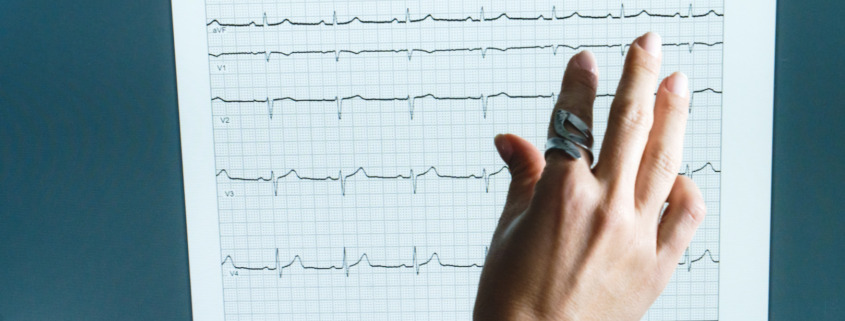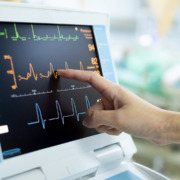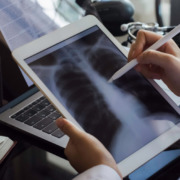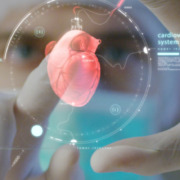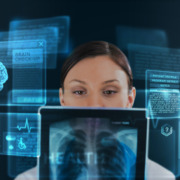How telemedicine the execution of ECG with reports
Last Updated on 25 de September de 2023 by Monica Jorge

Well-known and requested by doctors from different specialties, the electrocardiogram or ECG is the examination responsible for checking the rhythm of heartbeats. It is from this examination that possible abnormalities are diagnosed, such as arrhythmia, and other heart diseases. The results are analyzed and the patient receives an ECG report, indicating the normality or not of the cardiac electrical activity.
Due to its ease of execution and quick rhythm analysis, the ECG is the first recommended examination for assessing the functioning of the heart. It is of great importance, as it can reveal the first signs of heart conditions and serve as an early warning for more serious issues, such as myocardial infarction. According to the World Health Organization (WHO), cardiovascular diseases are the leading cause of death worldwide.
Today’s article discusses the performance of ECG with reports and how telemedicine can optimize this process. With the help of technology, it is possible to offer patients with more reliable result assessments and faster delivery.
Reed more: AI to speed up urgent cardiological exam reports
What is and how is an ECG with report done
An electrocardiogram is a non-invasive examination that allows for the electrical evaluation of cardiac activity while the patient is at rest, that is, if he has not made any type of effort in the last 10 minutes. The patient may also not have smoked in the last 30 minutes prior to the examination. This test is capable of determining the number of heartbeats per minute and the heart’s rhythm, identifying issues such as arrhythmias (abnormal rhythm), electrical conduction disorders and eventual overloads of the heart’s chambers.
The examination is simple, painless and usually quite fast. With the patient lying down, the chest, legs and arms are cleaned with gauze soaked in an antiseptic solution. Electrodes are then placed on the legs, near the wrists and on the anterior region of the patient’s chest. A conductive gel is used to prevent interference. The heart’s electrical activity travels through the tissues and reaches the skin, where it is captured by the electrodes. A device called an electrocardiograph receives the heart’s electrical signals from the heart and records this activity on graphs, which are printed on a paper or sent directly to the computer or tablet of the specialist doctor who issues the medical report remotely.
For the examination to generate good images, it is essential to choose a high-quality device.
As for the report, it is a document that contains a description of all the elements found in the examination, along with information about the patient’s heart rate, electrical axis, P-waves and other cardiovascular aspects.
The report is finalized with the doctor’s opinion, concluded from the data obtained in the examination, which, in general, involves comparing the patient’s generated graphs with standard graphs. Based on this comparison, the specialist checks whether the condition is normal or if the heartbeat is altered.
The importance of medical reports
As the initial examination for a heart check-up, the electrocardiogram should be seen as a piece of a larger ‘puzzle’, which includes other examinations such as echocardiogram, stress test, Holter monitoring, and more.
Despite being simple to perform, the ECG plays a crucial role in alerting to more severe heart conditions. That is why it needs to be done correctly, using a high-quality electrocardiograph device and a careful medical report to ensure possible cardiac issues are not overlooked, safeguarding the patient’s health.
Since the interpretation of the waves displayed on the ECG graphs is of great specificity, it is essential to issue a medical report made by a cardiologist with expertise in this evaluation. In most cases, the results are analyzed by a cardiologist.
The Role of Telemedicine in Conducting Examinations and Preparing Reports
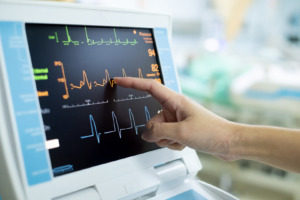
Telemedicine is already a recognized and legalized process worldwide for the analysis of examination results and the delivery of reports digitally. Through the use of Information Technologies, doctors have quick and easy access to the results of various examinations and can issue medical reports promptly and securely.
In this context, telemedicine makes it possible to deliver ECG reports to any clinic, hospital or doctor’s office, since the electrocardiograph machine is portable, and the results are sent directly from the device via the internet to a central hub with specialists who issue the medical reports remotely.
Hence, there is no need to have a specialist physically present at the clinic. It is just about connecting the electrocardiograph (whether portable or standard) to the telemedicine provider’s system. If your device is not digital, the results can be scanned or photographed and sent online. The whole process is conducted in one proper and safe information and image management system.
The main advancement of remote reports lies in procedures that do not require the presence of a specialist on-site and with a medical background. In other words, those are examinations that can be performed by technical healthcare personnel (trained to support telemedicine) and then evaluated by specialists, as is the case of the ECG with a medical report.
This way, medical practices, clinics, occupational health centers, hospitals, and pre-hospital care facilities can utilize telemedicine for conducting examinations and provide this service to patients.
There are systems, such as the Portal Telemedicine, that use artificial intelligence to triage emergencies in electrocardiogram exams, which allows an ECG report for urgent cases to be delivered in up to five minutes. Click here to learn more about this solution.
Advantages of: Remote medical report vs Conventional medical report
Telemedicine enables the provision of medical services and examinations in a faster and more cost-effective manner, all while maintaining high quality, credibility, and data security. Here are the advantages:
- Cost reduction – it will not be necessary to hire a specialist to evaluate the results. Clinics, hospitals and doctors’ offices can buy packages with a specific number of reports based on demand, investing only on what is necessary.
- Speed – telemedicine services have medical teams composed of specialists always available, some operating 24/7. These professionals are able to remotely issue medical reports of examinations conducted anywhere in the country allowing for same-day report delivery.
- Medical reports quality – many regions lack medical specialists in certain areas or, if available, the cost to access these professionals can be expensive. With the use of telemedicine, healthcare centers have access to specialists from other regions, without having to travel physically.
Thus, clinics and hospitals that opt for telemedicine to provide ECG with a medical report, gain a competitive advantage. By presenting this service to clients, your clinic will be recognized for the speed and credibility of its medical staff in issuing reports.
Read more: Artificial Intelligence in healthcare: solutions, possibilities, trends
Remote Report (telemedicine) vs. Conventional Report
Remote Medical Report (telemedicine) |
Conventional Medical Report |
|
| Hiring of specialist | Available through telemedicine service | Done in-house by the clinic/hospital/office |
| Level of specialist | Only renowned and highly credible doctors | Depends on the clinic/hospital/office’s hiring decisions |
| Examination Cost | Reduced (lower expenses on hiring and paper usage) | Standard |
| Speed in the evaluation reports delivery | Analysis done by the staff available 24/7 resulting in faster delivery to the patient | Depends on the availability of the hired specialist |
Did you like this content? Follow information about telemedicine on our blog.

Article translated by Celen Diaz
Graduated in Modern Languages and Business Translation,
with more than 10 years of experience as a Linguist.
